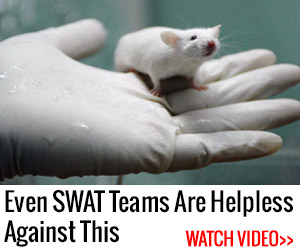Click Here To Join Our Telegram Channel for FREE daily tutorials!
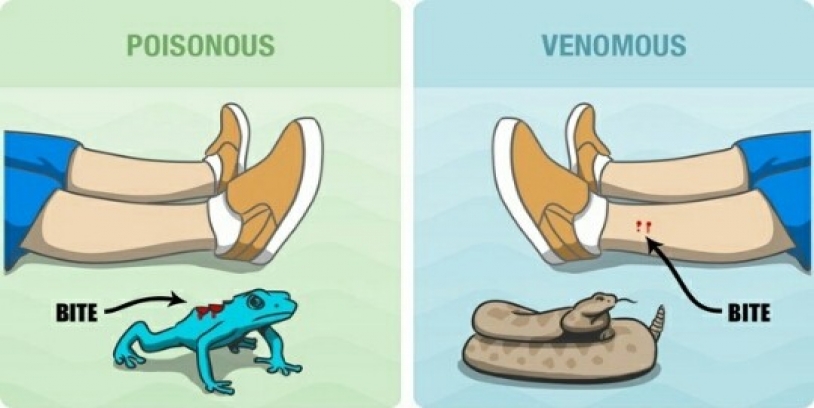
Many dangerous animals show signs that “they’re packing heat”. In nature, strong bright colors often mean KEEP AWAY. The brighter the color, the bigger the danger. Although, in some cases, harmless beings will mimic the patterns or colors as a defense mechanism, without having the ability to secrete deadly substances. The hornet moth (Sesia apiformis) mimics the appearance of hornets, making them look menacing despite the fact that their lack of venomous glands or stingers makes them completely harmless.
 Hornet moth (Sesia apiformis)
Hornet moth (Sesia apiformis)
That which injects venom in its prey or aggressor through special mechanisms (fangs, stingers etc.) is VENOMOUS. What is going to poison you if you eat it (the blow-fish, the golden poison frog etc.) is POISONOUS.
Let’s have a look at various representatives of the Animalia kingdom and, by comparison, determine what’s to be feared and what’s not.
Spiders
Spiders have gained the reputation of being biters and with good reason. For humans, the venom effect from most species can be painful, can cause infection-related complications, and in other cases can be lethal. They inject the poison via fangs called chelicerae that are connected to venomous glands located in the mandible.
The European garden spider (Araneus diadematus) is one of the most common spiders in Europe and North America. He is potentially dangerous for human beings, but never lethal under normal conditions. He’s easily identifiable by a pattern resembling a large cross on his back (abdomen). They’re specialized in spinning orb-webs (circular web patterns).
 The European garden spider (Araneus diadematus)
The European garden spider (Araneus diadematus)
The jumping spider of North America (Phidippus audax) is a non-venomous spider. Despite having strong, brightly-colored chelicerae, they do not possess venomous sacks. They are easily recognizable by their bright colored pattern of spots and stripes on the abdomen, contrasting with the overall color, black. They can jump over 50 times their own body length. But don’t worry, the best they can do is scare you out of their territory.
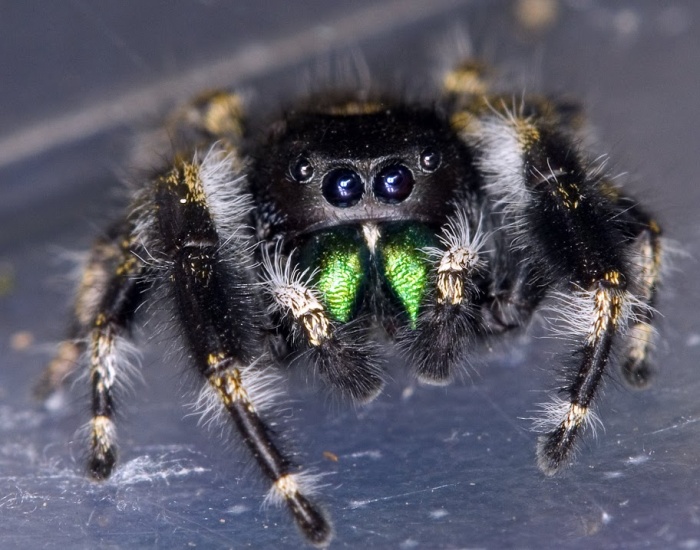 The jumping spider of North America (Phidippus audax)
The jumping spider of North America (Phidippus audax)
Recently determined in 2010 as the world’s most venomous spider, the Brazilian wandering spider (Phoneutria nigriventer) is the most dangerous representative of the Araneae order. It can grow to have a leg spam of maximum 15 cm and body length of 48 mm. Be on the lookout for this cream-colored spider, with several rows of black or red dots on the underside of the abdomen, contrasting mid segments and lighter joints. His defensive posture consists in raising his frontal legs in the air. Do not approach this spider in any way; his bite is 100% lethal!
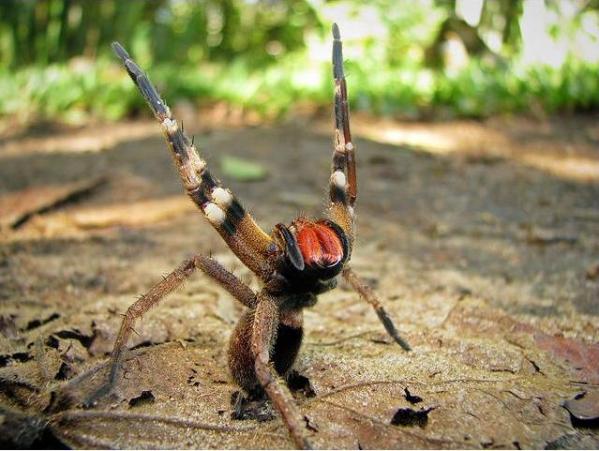 The Brazilian wandering spider (Phoneutria nigriventer)
The Brazilian wandering spider (Phoneutria nigriventer)
Snakes
Snakes are reptilians (order Reptilia, suborder Ophidia) that have lost their limbs throughout the evolutionary course. They have adapted to crawling on the surface thanks to special muscles found on their ventral side, protected by scaly plaques. They are easily identified thanks to their scaly bodies, hissing sounds, and limbless bodies. They too have the reputation of being nasty biters. The snakes with long fangs have the ability to fold them back in their mouth, thanks to hinge-like structures. This prevents the fangs of getting in the way of feeding or crawling. The venom is released from venom sacks that are located in the head, behind the eyes. While most snakes are potentially deadly to humans, some are not.
The rough green snake (Opheodrys aestivus) is a small, harmless snake, that doesn’t pose venom glands. Despite his bright greenish color, it has no real biochemical weapon in his arsenal, their diet consisting mostly in small prey (invertebrates and insects). It can grow up to 1.7m. It’s easily distinguishable because of the bright green scales and bright yellow sideline, running all the way from the sides of his head to his tail.
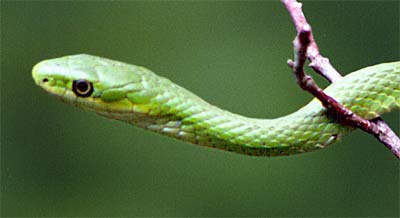 Rough green snake (Opheodrys aestivus)
Rough green snake (Opheodrys aestivus)
The Inland Taipan (Oxyuranus microlepydotus) is the most venomous snake known to man (so far). A single spray can release 110mg of venom. The neurotoxin complex found in this quantity is sufficient to kill 100 people. Its usual length is 1.8 meters, and the color pattern varies from dark brown (on his head) to a litter brown, towards the tail. These snakes are not aggressive, with 0 human casualties on record so far. However, all form of contact with these snakes is strongly unadvised.
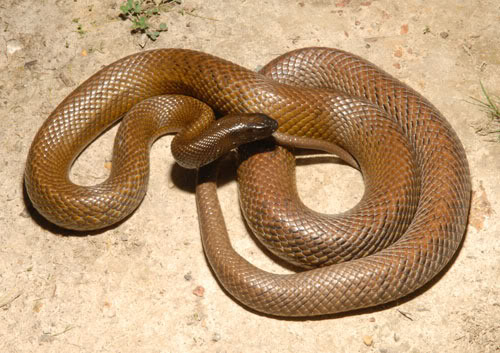 Inland Taipan (Oxyuranus microlepydotus)
Inland Taipan (Oxyuranus microlepydotus)
Just because a snake isn’t venomous, doesn’t mean he’s not dangerous. The members of the Pythonidae family lack venomous glands but are still predators. They have adapted to the predatory life by overcompensating and developing stronger than average muscles. They are big snakes, able to ingurgitate voluminous animals. They kill by constriction, wrapping themselves around the pray and strangulating it. The python (Python molurus molurus) is the most representative species, easily recognizable by his size (3 – 4m on average). He is fully covered in a mosaic-like pattern.
 The python (Python molurus molurus)
The python (Python molurus molurus)
Frogs
To some, it may come as a surprise to find frogs amongst some of the deadliest creatures known to men. I can assure you, they’re placed in the spotlight is well deserved. While most of these tiny amphibians pose little to no threat to humankind, some of them are more than enough to kill a human ten times over.
Many rumors and myths have circled throughout history around frogs like the Yellow-bellied toad (Bombina variegata), whose scaly and rough skin have classified it in popular culture as an ill omen and bringer of skin afflictions (warts etc.). Despite his monstrous appearance, this creature poses 0 threats to humans. Feel free to kiss away as many toads as you like. You’ll get no prince charming, true. But neither will you get incurable skin diseases!
 Yellow-bellied toad (Bombina variegata)
Yellow-bellied toad (Bombina variegata)
Kissing a golden poison frog (Phyllobates terribilis) however, may result in grave consequences. This tiny member of the Anura order is highly toxic even to the slightest touch. His bright yellow (even green or orange, according to species) outer coating is a pertinent signal for what’s underneath his epidermis: thousands of glands that secrete (as a defense mechanism) one of the most potent natural toxins ever discovered (LD50). 1mg is more than enough to easily kill 20 – 25 humans. The Embera tribe (Colombia) captured and restrain these frogs in order to deepen their hunting arrows in their skin, making them more efficient. The poison can maintain its deadly effect for up to 2.5 years on the arrow’s tip.
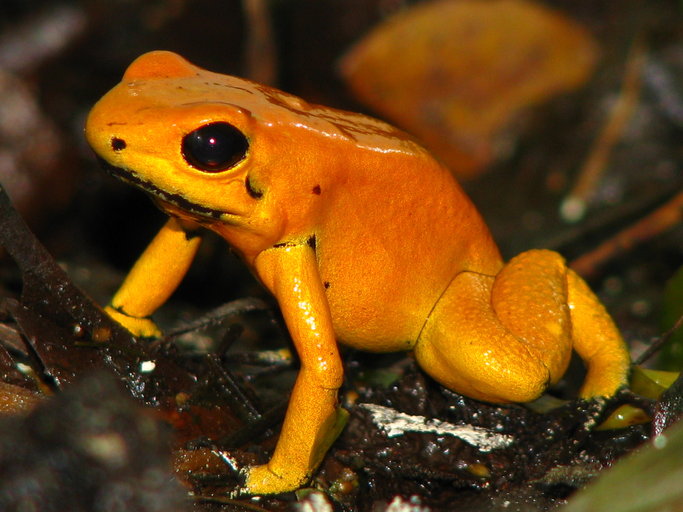 The golden poison frog (Phyllobates terribilis)
The golden poison frog (Phyllobates terribilis)
Fish
The first thing to come to mind when it comes to underwater predators is probably sharp teeth and strong jaws. But there are plenty of other ways marine life can harm the unwary or the unlucky.
If you happen to stumble across a Red scorpionfish (Scorpaena scrofa) and you get stung by one of its dorsal spines, it could very well be the last thing you’ll ever do. They pack a strong poison capable of rapidly afflicting vital organs. It can result in swelling, fever, vomiting, delirium, fainting and cardiac or respiratory collapse.
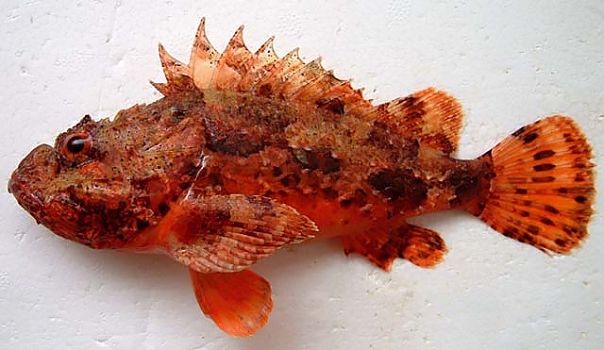 Red scorpionfish (Scorpaena scrofa)
Red scorpionfish (Scorpaena scrofa)
The Australian bull ray (Mylliobatis australis) is the stingray responsible for one the most covered deaths in modern culture, as in early September 2006 was claiming the life of nature-nut and animal enthusiast, Steve Irwin. Its tail packs a needle capable of injecting a potent toxin that can result in immediate paralysis and death due to heart failure. The patterns on its dorsal side may vary from grey to light beige (with or without patterns), while its ventral side is almost always white.
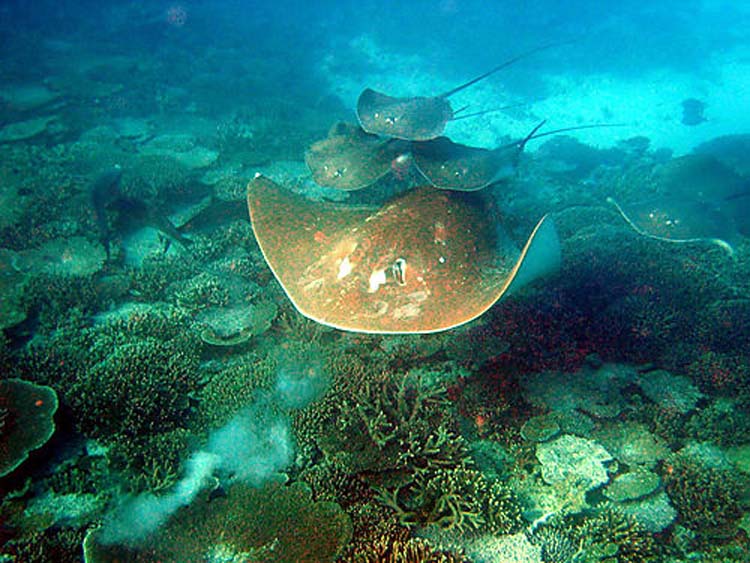 The Australian bull ray (Mylliobatis australis)
The Australian bull ray (Mylliobatis australis)
Although most jellyfish are nothing more than gentle roamers of the seas, not to be feared in a way, encountering the wrong type and not being able to recognize it may prove fatal. Some jellyfish feed with the help of tentacles covered in thousands of micro-stingers, paralyzing and killing most of the living organism that happens to pass through their deadly wail. The Box jellyfish a.k.a. the Sea Wasp (Carukia Barnesi) has more than enough potency in its sting to put down even the strongest people.
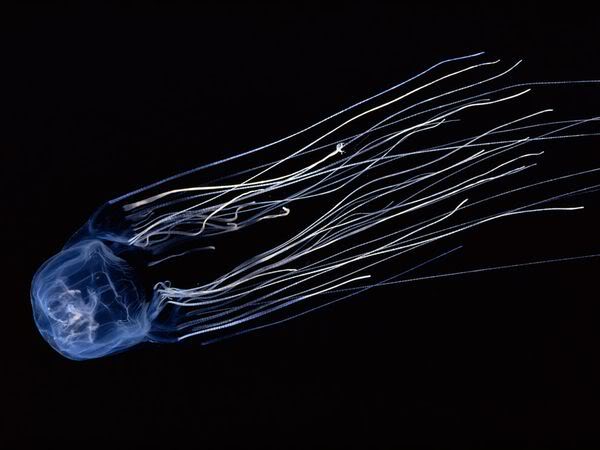 The Box jellyfish a.k.a. the Sea Wasp (Carukia Barnesi)
The Box jellyfish a.k.a. the Sea Wasp (Carukia Barnesi)
When it comes to nature’s children, some will hurt, some will not. Some will scare, some will kill. Know the difference! It’s the only thing standing between you and natural selection.
This Crazy Off Grid Device Literally Makes Drinkable Water From Fresh Air:
According to NASA, the U.S. is expecting a 100-YEAR LONG MEGADROUGHT.
It's already begun. Ask the farmers in California. They know.
Every survivalist knows that water is of critical importance. You NEED an independent water source that you can count on!
As an interesting "survival rehearsal" - imagine that you turned the tap on right now and nothing came out. How long would you last?
But what if there was another water source literally hidden in plain sight. That's right, I'm talking about the atmosphere!
The amazing thing about getting water from the natural moisture in the air... is that it is ALWAYS available.
This gives you real water security!
Learn more about how to tap into "Nature's secret water reservoir" and stay hydrated when TSHTF!
Watch the video:
😳 What Tinnitus Does To Your Brain Cells (And How To Stop It)
After 47 years of studies and countless brain scans done on more than 2,400 tinnitus patients, scientists at the MIT Institute found that in a shocking 96% of cases, tinnitus was actually shrinking their brain cells.
As it turns out, tinnitus and brain health are strongly linked.
Even more interesting: The reason why top army officials are not deaf after decades of hearing machine guns, bombs going off and helicopter noises…
Is because they are using something called "the wire method", a simple protocol inspired by a classified surgery on deaf people from the 1950s...

I Can't Help Showing This Off:
If you haven't heard of Claude Davis yet do yourself a huge favor and watch this video.
One of the smartest guys I ever had the pleasure of meeting, Claude set-up a unique prepping system that changed his life forever.
I already tried it myself and let me tell... you I was completely blown away... His surprising tactics could make your life easier and give you the peace of mind you deserve.
Don't just take my word for it... watch his short video and decide for yourself.

Most People Don't Have The Guts To Try This:
An amazing discovery in an abandoned house in Austin, Texas: A lost book of amazing survival knowledge, believed to have been long vanished to history, has been found in a dusty drawer in the house which belonged to a guy named Claude Davis.
Remember... back in those days, there was no electricity... no refrigerators... no law enforcement... and certainly no grocery store or supermarkets... Some of these exceptional skills are hundreds of years of old and they were learned the hard way by the early pioneers.
>> Click here to find out about them now
We've lost to history so much survival knowledge that we've become clueless compared to what our great grandfathers did or built on a daily basis to sustain their families.
Neighbors said that for the last couple of years Claude has tried to unearth and learn the forgotten ways of our great-grandparents and claimed to have found a secret of gargantuan proportions. A secret that he is about to reveal together with 3 old teachings that will change everything you think you know about preparedness:
>>> Click Here To Watch His Short Video <<<

More Off-Grid And Survival Resources:

What REALLY Happens When You Bury a Shipping Container? (Hint: It's A Bit Crazy...)
Shipping containers are all the rage - but if you are thinking about buying one, you MUST watch this video first:
There's a general belief that if you bury a shipping container you can create an awesome root cellar / storm shelter / survival bunker.
But is a shipping container strong enough to handle the pressure?
Watch the video to see what happens:
What Really Happens When You Bury a Shipping Container? (Click To Watch Video)

